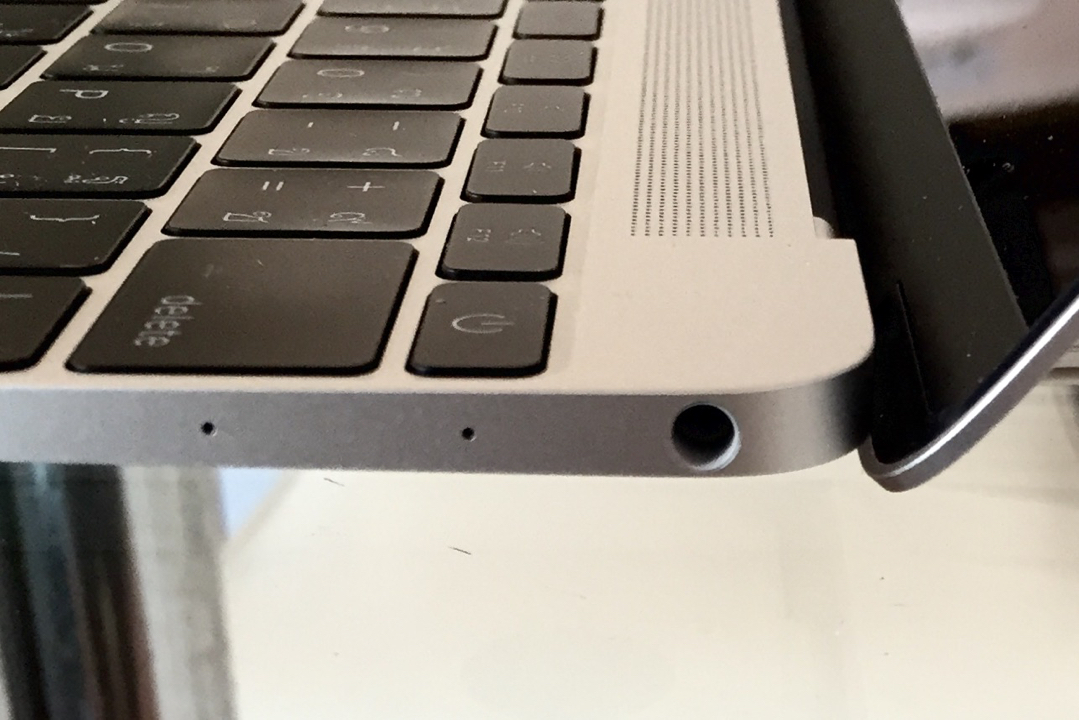Future Apple MacBooks: The iPhone is not the only device to kill the audio jack, and it’s ok.
As an iPhone user, given the chance, would you rather use the 3.5mm audio jack, or would you move on to using a Lightning connector? Before you answer, here is the caveat of this (hypothetical) question: you can only have one, not both. Either the 3.5mm audio jack, or the Lightning port.

What if the question were to concern Apple MacBook users too? According to a recent post by tech blogger Nilay Patel, on Daring Fireball, “Headphone Jacks Are the New Floppy Drives”. The headphone jack (1910) pre-dates floppy drives(1967) by 57 years, and the Lightning connector(2012) by 102 years. This makes the headphone jack a 108 years old technology that has essentially remained unchanged, and will likely remain the same, forever.
Killing the 3.5mm Jack on Macs
There is rumors that Apple might be looking into expanding its list of changes beyond an OLED touch pad, and Touch-ID, by replacing the audio jack with a Lightning port in future Macs.
Why shouldn’t Apple do it? Lightning-capable audio accessories are, after all, superior to the 3.5 headphone jack in every way: Lightning connectors are capable of delivering high-resolution sound quality, which has been for a long time accessible only to professional sound production environments. Even better, Lightning connectors carry digital data, which enables devices to display meta information in the same way as the old CDDB did in the hey-day of audio compact discs.
The big question on DRM
With that said, Patel raises a question: if Apple truly intends to eliminate the headphone jack across all devices, how much power will be given to the providers of copyrighted audio content, over consumers?
There is no way to improve upon the headphone jack, with all its faults and limitations, there lies its greatness: it’s the simplest way to convey sound over a wire. The headphone jack is essentially comparable to an open highway, with no tolls, no signage, no dividers, unhinged from traffic rules, with no cops to enforce them. It’s an open tube, capable of transmitting and receiving vibrations, no matter the source, destination or entitlement.
“Entitlement” is where things get dicey for the headphone jack: DRM protection is a hot button issue, and has been for a long time. Since the Napster days, the tech industry has worked relentlessly to ensure that digital rights are protected, by changing the way we access our data and our multimedia content. Cloud services have been at the forefront, by providing a means to store, purchase and access media, securely, but that’s not enough to curb the illegal sharing of copyrighted media, because there is still one place where DRM advocates cannot reach, and that is: local storage.
One thing that we know for a fact, is that reaching into consumer’s personal hard drives is a line that no company wants to cross, but the working principle of the hardware and software used to access files in a personal device like an iPhone or a MacBook, is at the discretion of the manufacturer, which means that consumers may store anything they want in their phones and laptops, but if Apple, or any other hardware manufacturer decides that the 3.5mm jack must go, playing back media acquired illegally may become a little tougher in the future. Or will it?
The big answer on DRM
The big problem with illegal content is that it falls under several grey area definitions: let’s say that a playlist on iTunes contains 5000 songs, 4000 of which were ripped from legally acquired compact discs. DRM protection may come in many forms, but not all can be detected with 100% accuracy, which begs the question: what will happen if we try to listen to a song that doesn’t appear to contain any DRM information? What about 4000 songs?
The short answer is: absolutely nothing.
The law says that anyone who owns a legally purchased piece of copyrighted music, can legally make a copy, for personal use, in any which way he or she chooses. With that said, we can safely put aside fears of Big Brother arbitrarily blocking music from being played through a digitally connected accessory, like Lightning-connected headphones or speakers.
Why is it possible to answer this question so confidently? Because the real issue about Apple replacing the 3.5mm jack with the Lightning connector is not about DRM: it’s about innovation, as Patel puts it:
“...This is how it goes. If it weren’t for Apple we’d probably still be using computers with VGA and serial ports. The essence of Apple is that they make design decisions ‘no one asked for’...”.